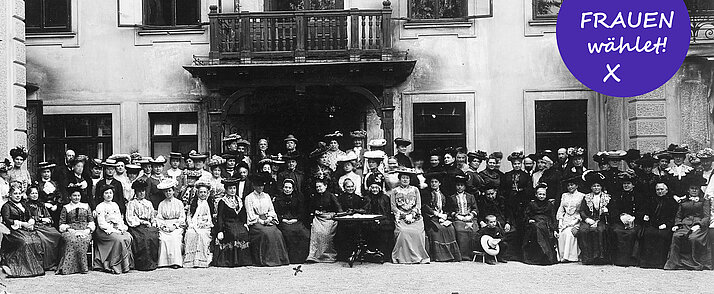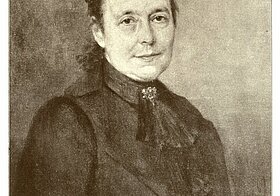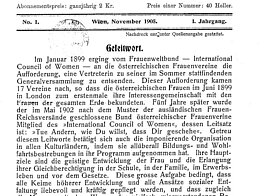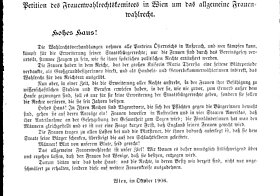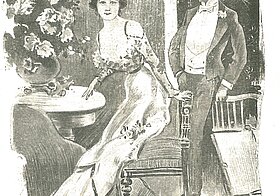The years 1905 and 1906 saw a general debate on suffrage in Austria.
The Social Democratic Women’s Movementstepped away from its claim to women’s suffrage at this time – in line with the party's directive – to avoid putting the attainment of men’s suffrage at risk. In 1903 Victor Adler emphasised that women had to take a back seat. The question of the priority of men’s suffrage or voting rights for both sexes remained controversial among female Social Democrats until 1907.
At the same time, liberal women who rejected all links to a political party were increasing their demands for women’s suffrage. In 1905 members of the Federation of Austrian Women’s Associations formed a Women’s Suffrage Committee with this aim, as women were banned from setting up an explicitly political association under the Law on Associations of 1867. That law restricted opportunities for women to organise, particularly the liberal middle class.
With the adoption of universal equal suffrage for men on January 26th 1907 – a success for the Social Democrats – women’s exclusion from all political participation at parliamentary level reached its pinnacle. The right to vote was again taken away from the few female landowners. The parliament gave the following reason for not introducing women’s suffrage: “The majority of the committee took the view that women are not included in any of the States of Europe where universal suffrage has been introduced and it would be very dangerous to attempt to allow them to participate in political life in Austria at a time of profound political change.”
Due to an event, the State Hall will be closed from 2 p.m. on April 24, 2024.

